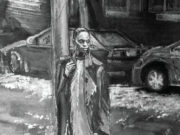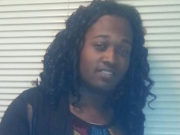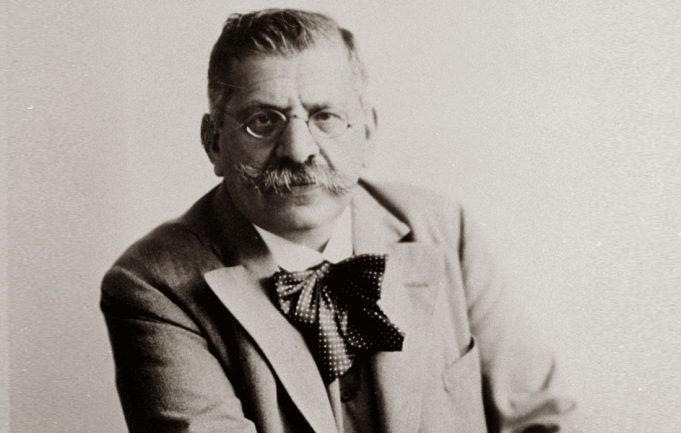Magus Hirschfeld was a pioneer who advanced our understanding of human sexuality and LGBTI human rights during a time of persecution by the Nazi regime.
Hirschfeld was born on May 14, 1868, in Kołobrzeg, Poland. He was born of a Jewish conservative family and was the son of a highly regarded physician. Even at a young age he found himself curiously fascinated with sex. He saw it as something natural and not immoral. He would go to college to study philosophy and philology before attending medical school. It was during his time at medical school when he was greatly affected by how his class was made to study a gay man, who was serving a 30-year sentence for homosexuality, as if he was a lab animal or a specimen. Fully outraged by the experience, it would go on to affect his destiny. He would earn his doctorate in 1892.
“The guilt from this experience would set Hirschfeld on his path to researching homosexuality.”
Hirschfeld spent eight months traveling the United States and writing for German journals. He would eventually setup his own practice, finally settling in Berlin-Charlottenburg in 1896. It was early in his practice when outside of his apartment he would often be approached by a soldier who was struggling with his own homosexuality, often begging Hirschfeld for help. He would finally give in and invite the soldier to visit his practice, only to find the soldier had committed suicide the night before. The guilt from this experience would set Hirschfeld on his path to researching homosexuality.
Upon gaining his own understanding of homosexuality, Hirschfeld felt that once there was a better understanding within the scientific community it would lead to the elimination of social hostility towards gay people. In 1897, Hirschfeld founded the Scientific Humanitarian Committee. Their goal was to repeal paragraph 175, a section of the German penal code that had criminalized homosexuality in 1871. He would fight for this repeal all the way into the 1920’s, where after finally gaining some ground it would ultimately be doomed by the takeover of the Nazi party.

Hirschfeld would go on to treat homosexuals by encouraging them. He found there was nothing immoral about it and that it was a natural extension of nature. His acceptance of gay culture would soon be widespread with many patients coming to see him, though some gays and lesbians were worried that Hirschfeld was “rocking the boat.”
“His findings would lead him to believe that everyone on the gender spectrum was a form of intersex”
His findings would lead him to believe that everyone on the gender spectrum was a form of intersex. This would ultimately lead him to treating transgender and intersex patients. In 1910 he wrote a book called Transvestites, which coined the term “transvestite”. Though that was the umbrella term in the day, many people in his study would be considered transgender or intersex today. In 1919 he would open the Institute for Sexual Science, the first clinic to serve transgender people on a regular basis. He would see 20,000 patients a year. It was during this time when he would begin to perform gender reassignment surgeries, with his first documented patients being Dorchen Richter and the well-known Lili Elbe.
“In this study he determined there was an infinite number of gradations and combinations within the intersex spectrum with no one being 100% male or 100% female.”
According to the Magnus Hirschfeld Foundation, Hirschfeld and his staff compiled a 20,000-page anthology between 1899 and 1923 called the “Yearbooks For Sexual Intermediaries”. In this study he determined there was an infinite number of gradations and combinations within the intersex spectrum with no one being 100% male or 100% female. He also often referred to homosexuality as almost a “third sex.”
By the 1930’s would come the rise of the Nazi party in Germany. Hirschfeld’s Institute for Sexual Science would become a primary target of the regime. Over 100,000 gay men and trans women would be arrested for violating paragraph 175. 15,000 people were sent to concentration camps where they were required to wear a pink triangle to identify themselves as homosexuals. In 1933, the Nazi’s would raid Hirschfeld’s institute. His entire library with over 30 years of research would be burned to the ground in what is known as the great bonfire of “enemy books”. Only some of his records would survive.

Hirschfeld was no longer in Germany when his institute was destroyed. He had been exiled in France after being on a global speaking tour and never allowed to return home. He would live in Paris then eventually Nice, where he would die of a heart attack on his 67th birthday on May 14, 1935. His lifelong lover, partner and assistant, Karl Giese, would end up commiting suicide in 1938.
Magnus Hirschfeld was way ahead of his and even our time when it comes to human sex, gender and sexuality. The burning of his library set the LGBTI movement almost a century backwards as the information contained in his manuscripts would have had a profound impact on what we know today. Luckily what did survive did have an impact on what we do know. His work would influence later pioneers such as Harry Benjamin. He was a champion for LGBTI civil rights. When made aware that newspapers in the United States were hailing him as “the Einstein of sex”, he wittily replied that he would feel much happier if they called Einstein “the Hirschfeld of physics”.
































